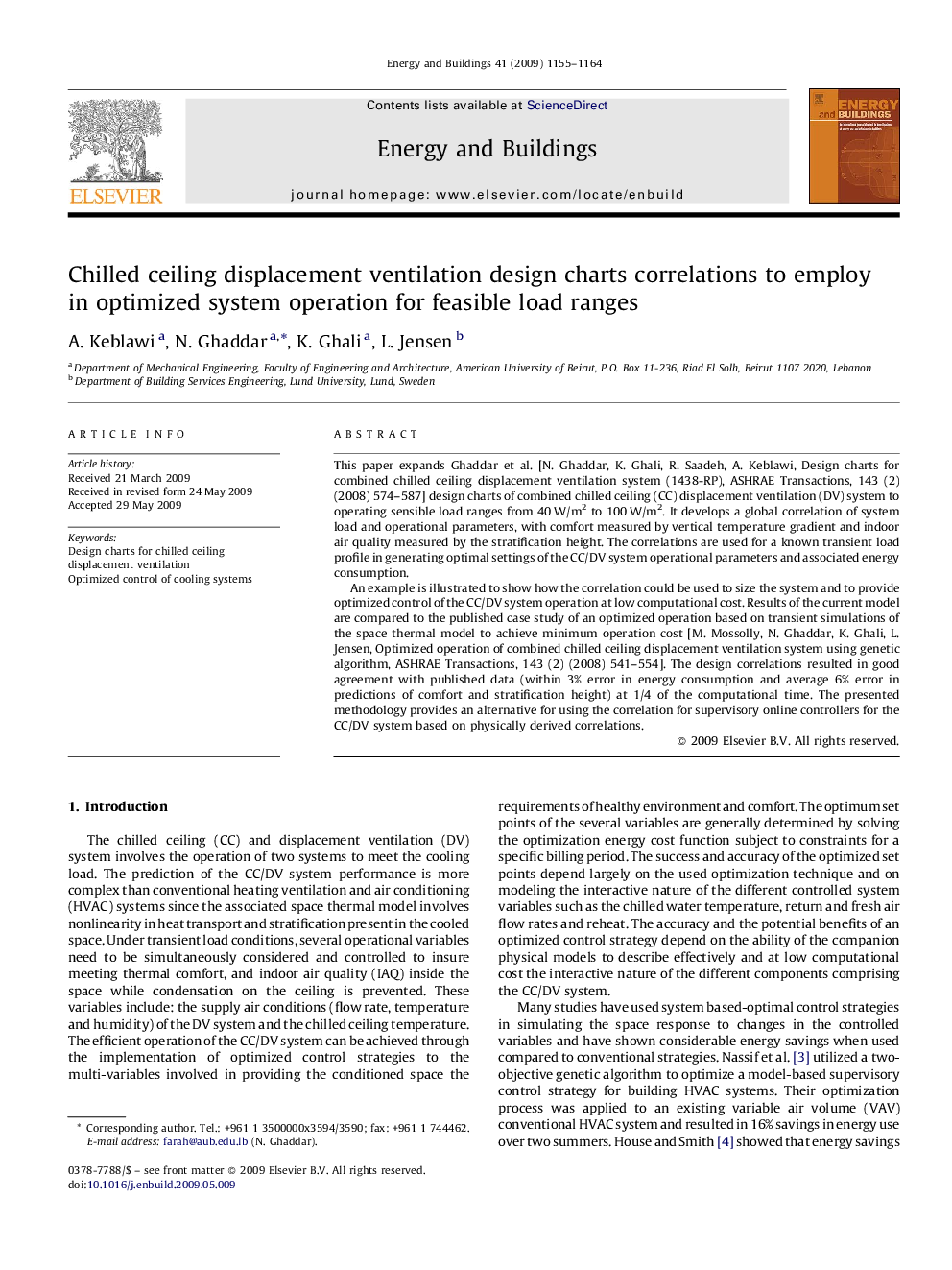| Article ID | Journal | Published Year | Pages | File Type |
|---|---|---|---|---|
| 264907 | Energy and Buildings | 2009 | 10 Pages |
This paper expands Ghaddar et al. [N. Ghaddar, K. Ghali, R. Saadeh, A. Keblawi, Design charts for combined chilled ceiling displacement ventilation system (1438-RP), ASHRAE Transactions, 143 (2) (2008) 574–587] design charts of combined chilled ceiling (CC) displacement ventilation (DV) system to operating sensible load ranges from 40 W/m2 to 100 W/m2. It develops a global correlation of system load and operational parameters, with comfort measured by vertical temperature gradient and indoor air quality measured by the stratification height. The correlations are used for a known transient load profile in generating optimal settings of the CC/DV system operational parameters and associated energy consumption.An example is illustrated to show how the correlation could be used to size the system and to provide optimized control of the CC/DV system operation at low computational cost. Results of the current model are compared to the published case study of an optimized operation based on transient simulations of the space thermal model to achieve minimum operation cost [M. Mossolly, N. Ghaddar, K. Ghali, L. Jensen, Optimized operation of combined chilled ceiling displacement ventilation system using genetic algorithm, ASHRAE Transactions, 143 (2) (2008) 541–554]. The design correlations resulted in good agreement with published data (within 3% error in energy consumption and average 6% error in predictions of comfort and stratification height) at 1/4 of the computational time. The presented methodology provides an alternative for using the correlation for supervisory online controllers for the CC/DV system based on physically derived correlations.
